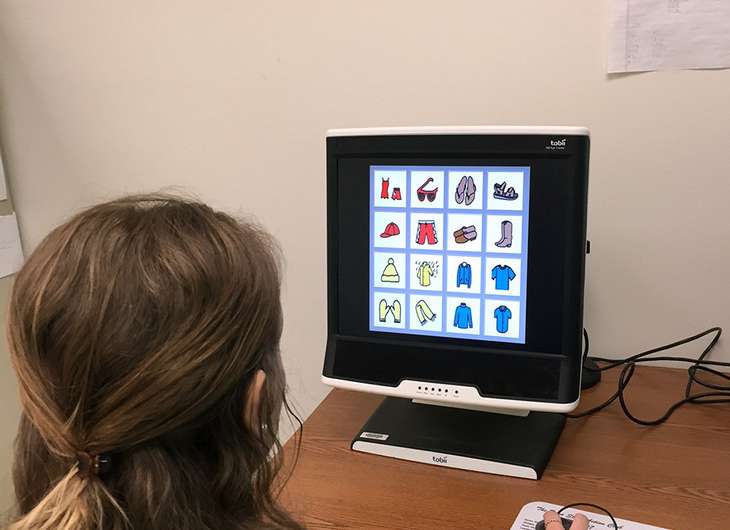Project aims to improve learning in young people with Down Syndrome

Children with Down Syndrome face many unique challenges, including being able to communicate effectively as they enter into their school years. A new Penn State study is looking to improve communications aids to better meet their academic and social needs.
Krista Wilkinson, professor of communication science disorders at Penn State, has worked with children with disabilities such as Down Syndrome (DS) for over 25 years. "Recent studies have shown that 95 percent of children with DS have difficulty being understood by persons outside of their immediate social circle. This puts them at risk of falling behind their peers both academically and socially," she explained.
Miscommunication can also lead to frustration when efforts to communicate are unsuccessful. "Behavior problems resulting from frustration can have significant health implications and raise service costs when behavior management plans are needed," Wilkinson said.
Wilkinson is working with Rick Gilmore, associate professor of psychology, to discover how children with DS understand their world through a series of eye tracking tests and communication interventions for kids with these disabilities.
The researchers will use aided augmentative and alternative communication (AAC) displays, tablet-style computers that present the user with graphic symbols, text and sometimes synthesized voice output. Because AAC systems rely mostly on vision rather than sound or speech for access to the communication messages, it is critical to map out how children with DS examine and extract information from these visual displays.
According to Wilkinson, little is known about the visual processing skills of those who have DS, and few current AAC designs consider the fit between the system and the user. Recent reports suggest while AAC interventions benefit many people, success is dependent on the system and skill set of the user. "Our goal is to improve the design of AAC displays for individuals with DS through the study of eye tracking," Wilkinson said. "Rarely used in DS research, eye tracking will reveal attention patterns and processes that typically go unrecorded in behavioral research."
The three-phase project will begin with eye tracking studies in a controlled, non-social laboratory conditions with school-aged children. The research team will use AAC displays with different designs to examine gaze patterns and reaction times and map out visual attention.
In the next phase, the research team will introduce social interactions and record gaze path using mobile eye tracking technology. "We will once again record visual attention via eye tracking using the AAC display, but add a shared book reading activity in which the AAC display is used for communication with a partner," Wilkinson explained. "This phase will also use mobile eye tracking goggles to record visual fixation during the reading activity in real time."
In the final phase, the team will translate the knowledge gained from the previous phases to design two AAC displays. "We will explore the effects of the different display designs, first under controlled book reading conditions, then during a snack activity," said Wilkinson. "We are hopeful one of the displays will enhance communication outcomes."
The researchers will use their findings to suggest appropriate changes to AAC devices, which may include more appropriate and motivating vocabulary, physical accommodations to allow optimal access, and provide training. "The project will allow us to move the information gained during the project to a place where it will matter and open educational doors. We'll learn how kids with DS attend to their visual surroundings, and, by a simple re-design of the AAC display, hope to demonstrate consistent learning gains," Wilkinson said.

















